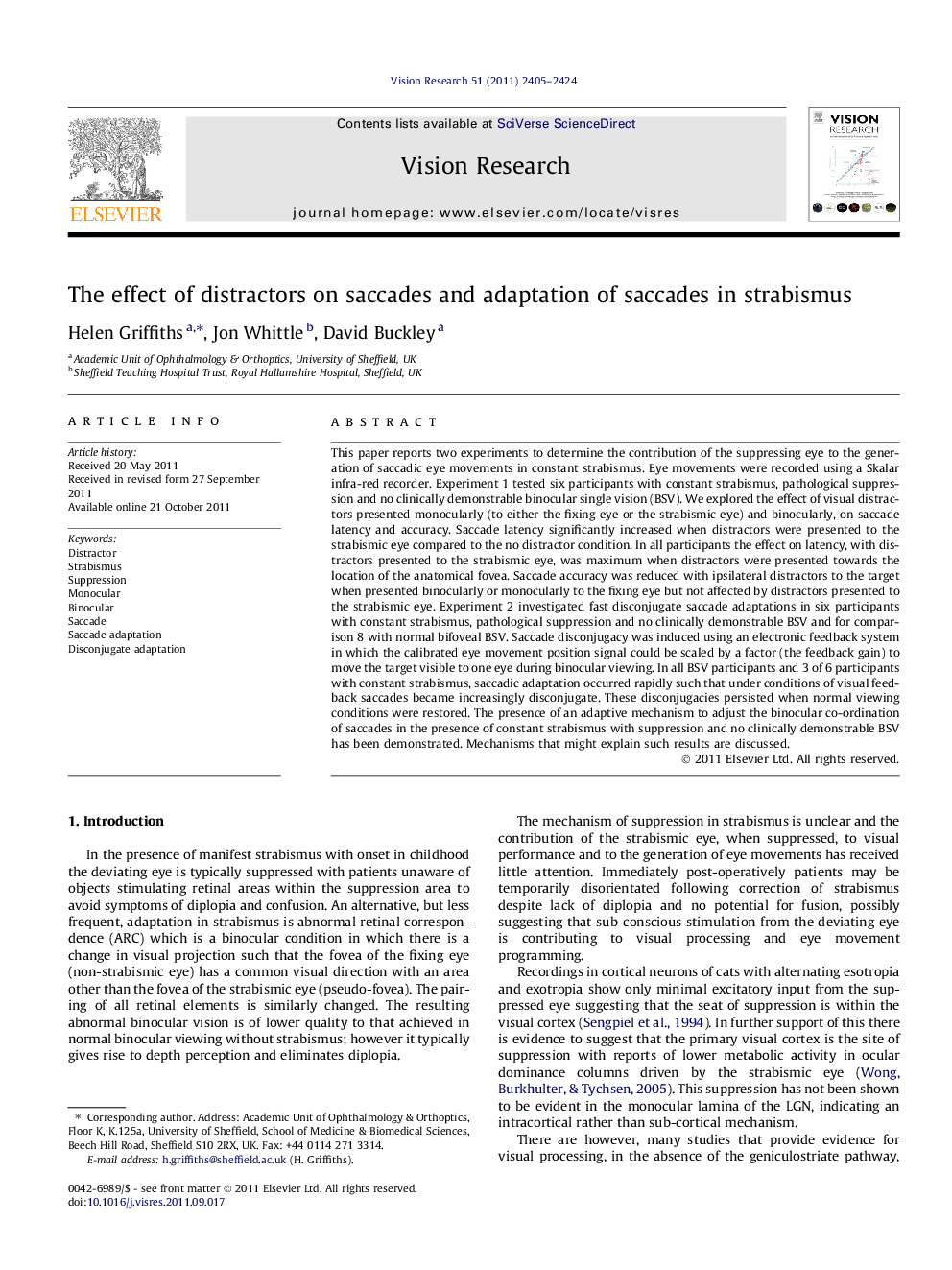| کد مقاله | کد نشریه | سال انتشار | مقاله انگلیسی | نسخه تمام متن |
|---|---|---|---|---|
| 4034142 | 1603241 | 2011 | 20 صفحه PDF | دانلود رایگان |

This paper reports two experiments to determine the contribution of the suppressing eye to the generation of saccadic eye movements in constant strabismus. Eye movements were recorded using a Skalar infra-red recorder. Experiment 1 tested six participants with constant strabismus, pathological suppression and no clinically demonstrable binocular single vision (BSV). We explored the effect of visual distractors presented monocularly (to either the fixing eye or the strabismic eye) and binocularly, on saccade latency and accuracy. Saccade latency significantly increased when distractors were presented to the strabismic eye compared to the no distractor condition. In all participants the effect on latency, with distractors presented to the strabismic eye, was maximum when distractors were presented towards the location of the anatomical fovea. Saccade accuracy was reduced with ipsilateral distractors to the target when presented binocularly or monocularly to the fixing eye but not affected by distractors presented to the strabismic eye. Experiment 2 investigated fast disconjugate saccade adaptations in six participants with constant strabismus, pathological suppression and no clinically demonstrable BSV and for comparison 8 with normal bifoveal BSV. Saccade disconjugacy was induced using an electronic feedback system in which the calibrated eye movement position signal could be scaled by a factor (the feedback gain) to move the target visible to one eye during binocular viewing. In all BSV participants and 3 of 6 participants with constant strabismus, saccadic adaptation occurred rapidly such that under conditions of visual feedback saccades became increasingly disconjugate. These disconjugacies persisted when normal viewing conditions were restored. The presence of an adaptive mechanism to adjust the binocular co-ordination of saccades in the presence of constant strabismus with suppression and no clinically demonstrable BSV has been demonstrated. Mechanisms that might explain such results are discussed.
► Two experiments investigate the contribution of the suppressed strabismic eye.
► Unseen distractors in the suppression area increased saccade latency.
► Saccade disconjugacy occurred in response to targets presented to suppressed retina.
► The suppressed retinal areas within the strabismic eye contribute to eye movement planning.
Journal: Vision Research - Volume 51, Issues 23–24, 8 December 2011, Pages 2405–2424